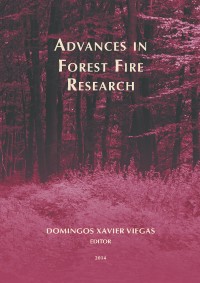Please use this identifier to cite or link to this item:
https://hdl.handle.net/10316.2/34306| Title: | Consideration of an empirical model for wildland firefighter safety zones | Authors: | Butler, B. | Keywords: | Fire behavior;Prescribed fire;Firefighter safety | Issue Date: | 2014 | Publisher: | Imprensa da Universidade de Coimbra | Journal: | http://hdl.handle.net/10316.2/34013 | Abstract: | The term safety zone was first introduced into the official literature in 1957 in the aftermath of the Inaja fire that killed 11 firefighters. Since then identification of safety zones has been a primary duty of all wildland firefighters. Unfortunately, information regarding what constitutes an adequate safety zone is not well defined. Measurements of energy release from wildland fires have been used to develop an empirically based safety zone guideline. The proposed model is compared against past fire entrapments in North America. The comparison indicates that the empirical model does provide an extra margin of safety over most entrapments that are associated with injury or fatalities but it seems to underpredict the separation distance needed to meet the full definition of a safety zone. | URI: | https://hdl.handle.net/10316.2/34306 | ISBN: | 978-989-26-0884-6 (PDF) | DOI: | 10.14195/978-989-26-0884-6_147 | Rights: | open access |
| Appears in Collections: | Advances in forest fire research |
Files in This Item:
| File | Description | Size | Format | |
|---|---|---|---|---|
| 978-989-26-0884-6_147.pdf | 1.52 MB | Adobe PDF |  |
Items in DSpace are protected by copyright, with all rights reserved, unless otherwise indicated.
